 |
 |
 |
| |
An assessment of clinical frailty and early aging among a cohort of people living with HIV in Ontario, Canada….41% prefrailty (age 44), 6% frailty (age 55): indicators of frailty & prefrailty; IDU history increased risk, previous AIDS increased risk
|
| |
| |
AIDS 2024 July 22-26 Munich
N. Bauer1,2, S. Hillier3, K. O'Brien2, L. Light2, L. Sirisegaram4, A. Kroch2
Institutions
1University of Toronto, Temerty Faculty of Medicine, Toronto, Canada, 2Ontario HIV Treatment Network (OHTN), Toronto, Canada, 3York University, School of Health Policy & Management, Toronto, Canada, 4University Health Network and Sinai Health Systems, Division of General Internal Medicine and Geriatric Medicine, Department of Medicine, Toronto, Canada
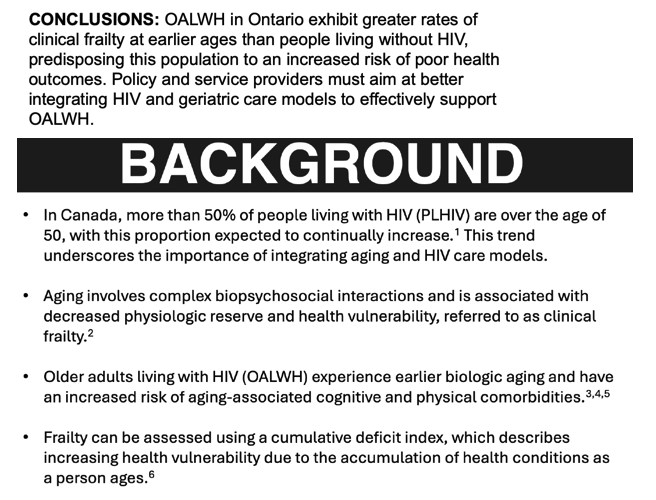
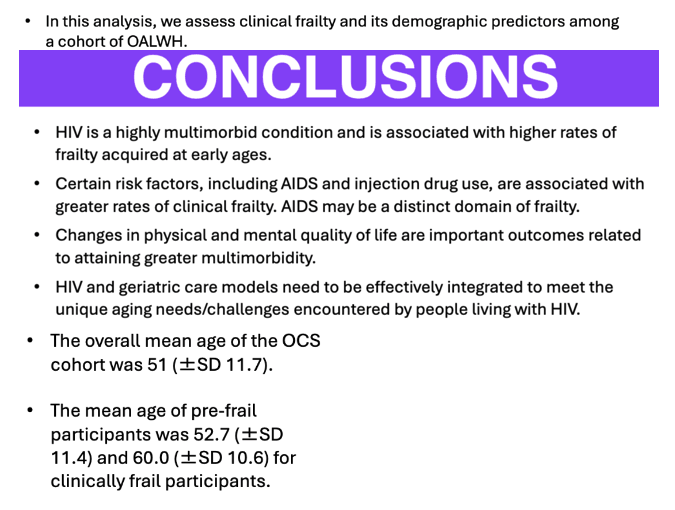
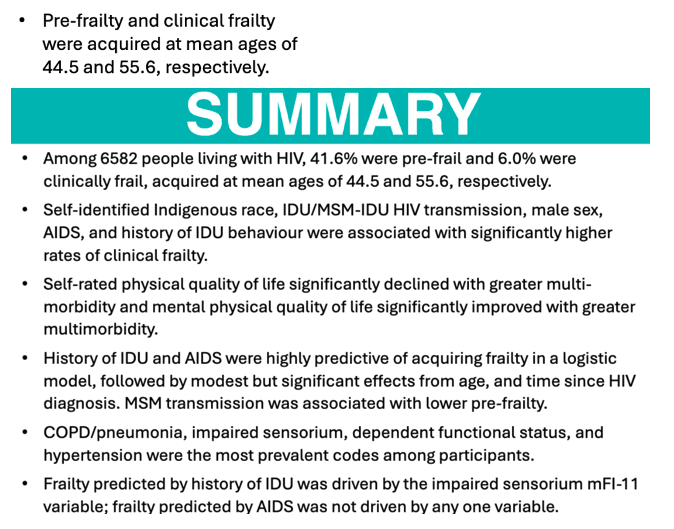
BACKGROUND: In order to meet the UNAIDS targets, focus must be placed on quality of life for older adults living with HIV (OALWH). OALWH experience earlier biologic aging and have an increased risk of aging-associated cognitive and physical comorbidities. Aging involves complex biopsychosocial factors which interact to yield a clinical phenotype of frailty. In this analysis, we used a cumulative deficit model to examine frailty in a cohort of OALWH.
METHODS: The OHTN Cohort Study (OCS) is an open longitudinal cohort of people living with HIV at 15 clinical sites in Ontario, Canada, with currently over 5000 people under active follow-up. The study includes data abstraction from clinical records, laboratory reports, and an annually administered questionnaire. We identified clinical frailty using the modified frailty index (mFI), approximated with aggregations of ICD-10 codes from diagnostic records. Presentation of a frailty related condition contributes to a frailty score. A score of 0 represents no clinical frailty, 1-2 is pre-frailty, and =3 is clinical frailty.
RESULTS: Data from 6582 participants and diagnostic reports from 1940-2018 were included. Overall, the median age was 51. 52.4% had no indicators of frailty, 41.6% had pre-frailty (median age 44), and 6.0% had clinical frailty (median age 55). The frailty indicators with the highest prevalence were COPD/pneumonia (17.0%), impaired sensorium (15.4%), non-independent functional status (13.9%), and hypertension (13.6%). Females were found to have greater pre-frailty (41.4% vs. 42.7%) whereas males had greater clinical frailty (6.3% vs. 4.3%). Among those who acquired HIV from intravenous drug use (IVDU), there were higher rates of pre-frailty (52.2% vs. 39.5%) and clinical frailty (7.6% vs. 5.7%). In a multivariate logistic model, IVDU (OR 2.03, p<.0001), AIDS (OR 1.58, p<.0001), and age (OR 1.04 pre-frailty, p<.0001; OR 1.08 clinical frailty, p<.0001) were found to be associated with frailty. Adjusted sex and non-white race were not independently associated with frailty.
CONCLUSIONS: OALWH in Ontario exhibit greater rates of clinical frailty at earlier ages than people living without HIV, predisposing this population to an increased risk of poor health outcomes. Policy and service providers must aim at better integrating HIV and geriatric care models to effectively support OALWH.
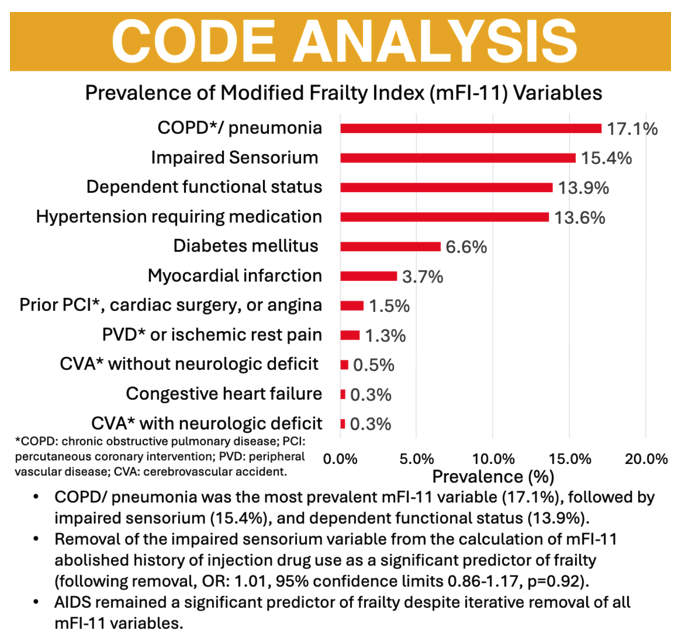
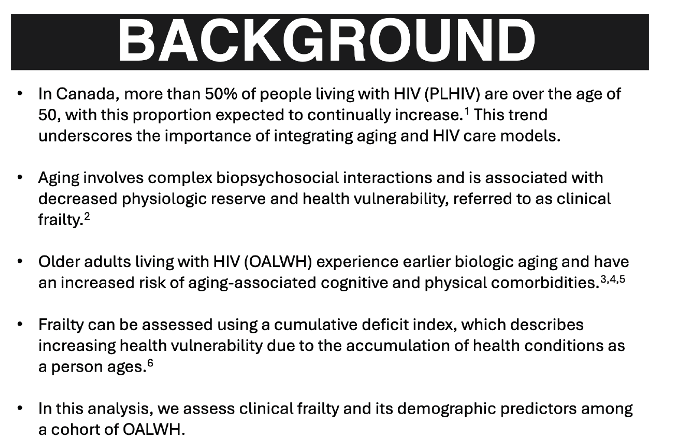
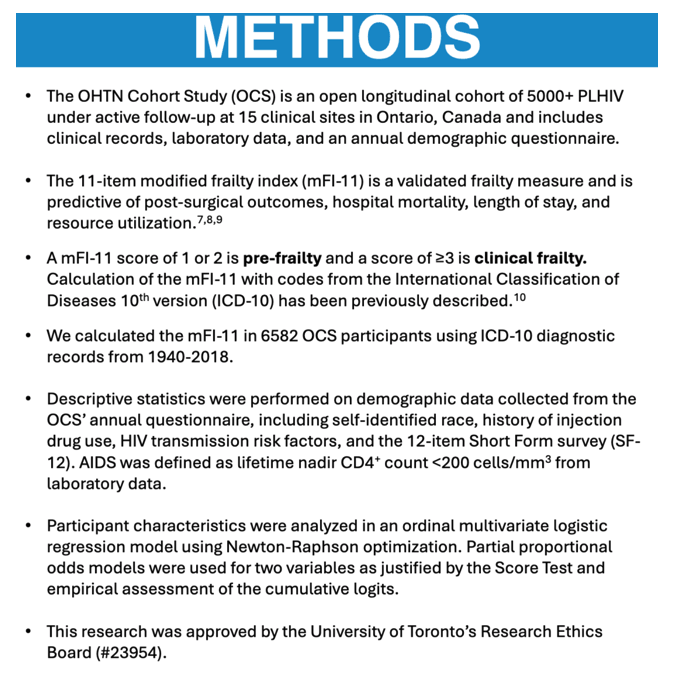
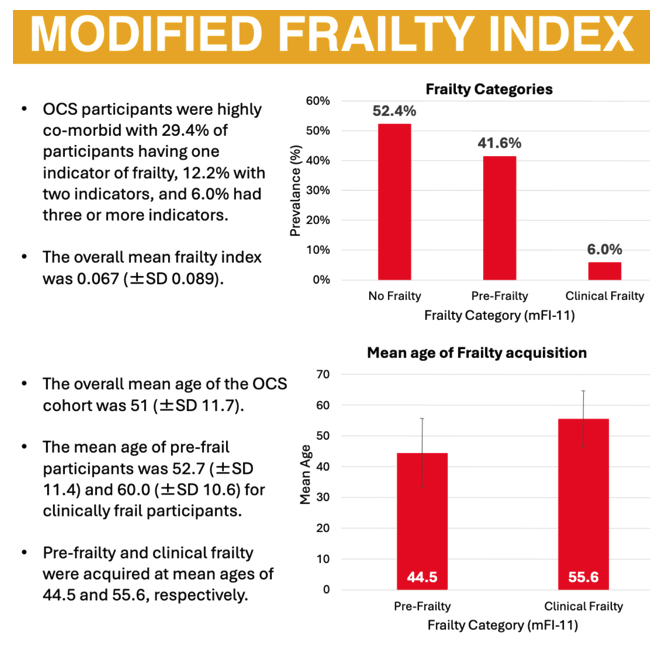
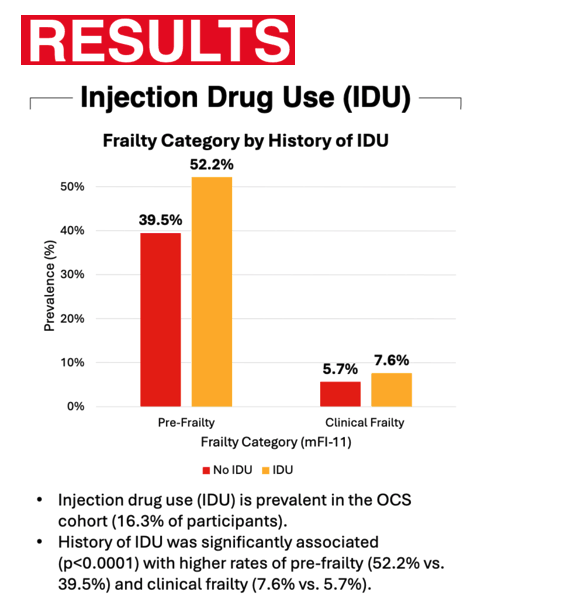
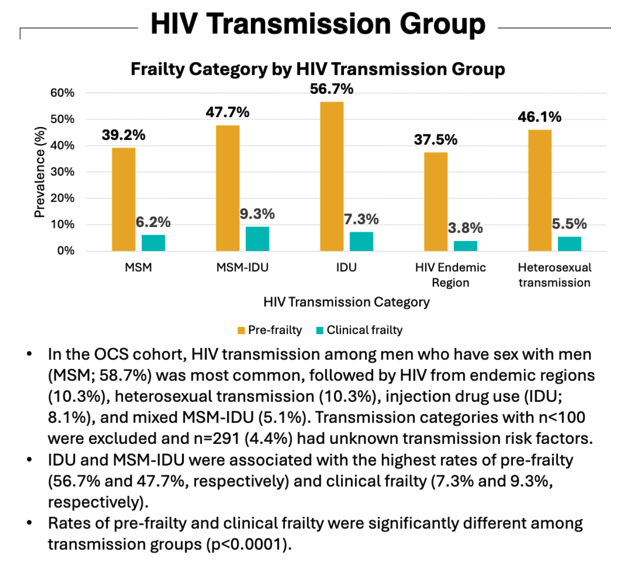
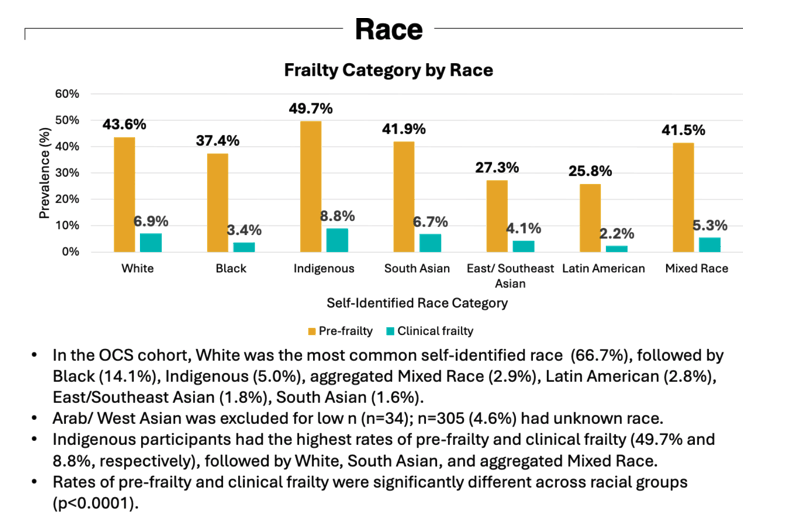
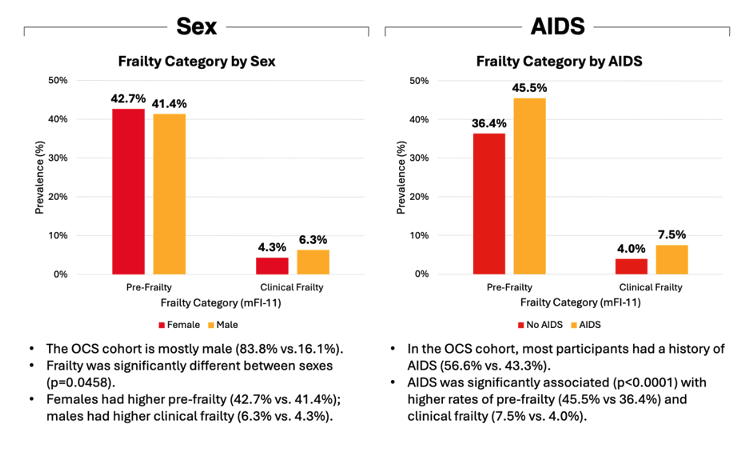
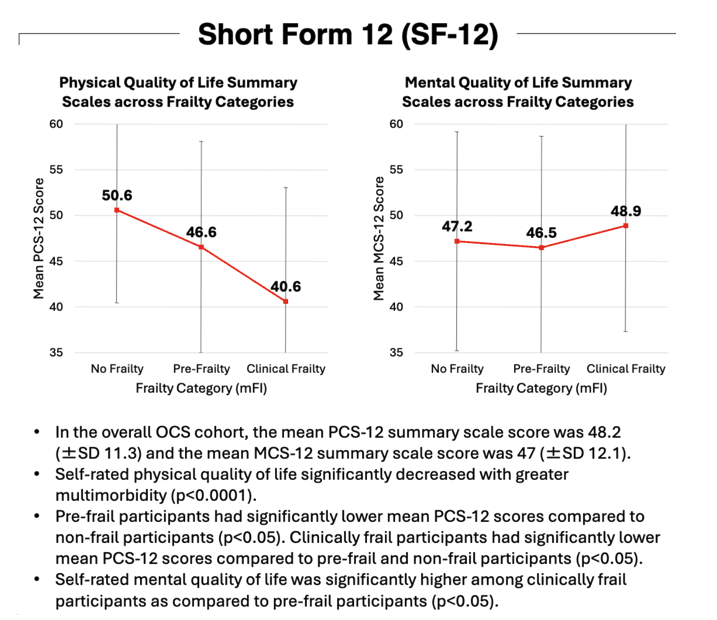
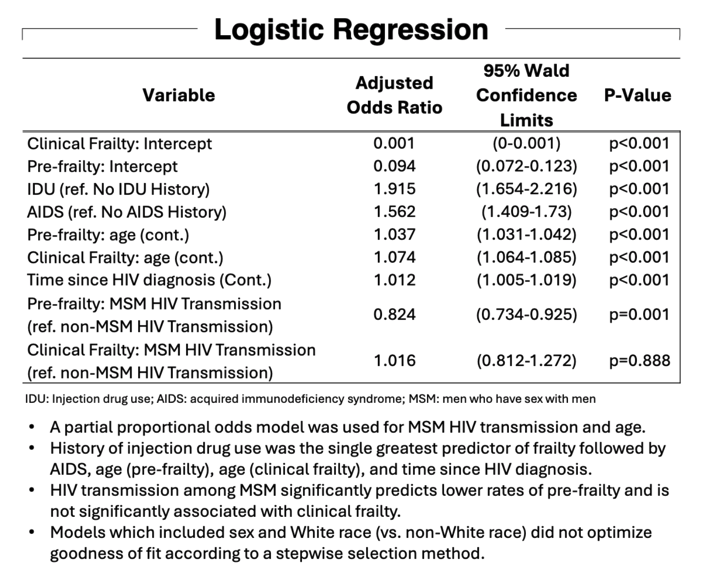
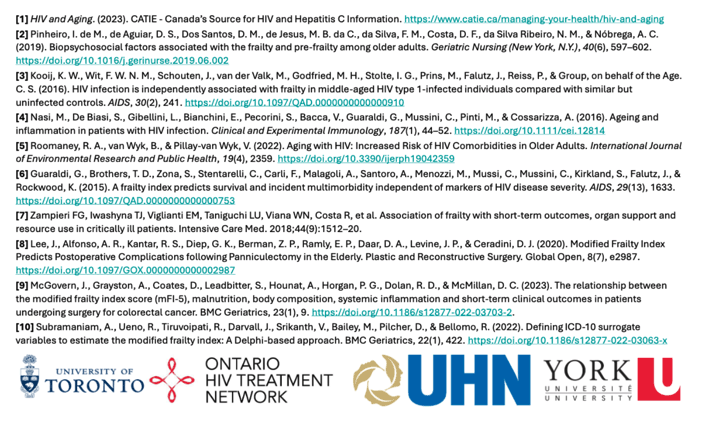
|
| |
|
 |
 |
|
|